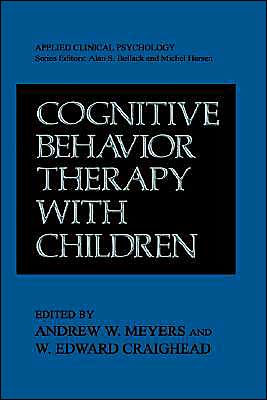Cognitive Behavior Therapy with Children
Recent estimates (Hallahan & Kauffman, 1978) indicate that over 4. 7 million children, 7.3% of the child population under the age of 19, are labeled emotionally disturbed, mentally retarded, or learning-disabled. Moreover, many of these children remain unserved or are inadequately served. The past decade has produced an increasing concern with the mental health needs of these children and their families. This trend had as much impact in behavior therapy as it did in any other branch of the helping professions. Behavioral work with children, with its emphasis on skill development and environmental modification, helped to build into child psychotherapy a true preventive mental health orientation. The ease of delivery and application of behavioral procedures allowed parents and other caregivers to become meaningfully involved in the clinical process, and so facilitated therapy gains and the maintenance and generalization of those gains. Perhaps the most significant change in behavior therapy in the 1970s was the move beyond interventions derived strictly from learning theories to applications based on knowledge from a variety of psycho logical research areas. The cognitive mediational activities of the client have received special attention, and this book presents the conceptual, methodological, and clinical issues in contemporary cognitive behavior therapy with children.
1013598945
Cognitive Behavior Therapy with Children
Recent estimates (Hallahan & Kauffman, 1978) indicate that over 4. 7 million children, 7.3% of the child population under the age of 19, are labeled emotionally disturbed, mentally retarded, or learning-disabled. Moreover, many of these children remain unserved or are inadequately served. The past decade has produced an increasing concern with the mental health needs of these children and their families. This trend had as much impact in behavior therapy as it did in any other branch of the helping professions. Behavioral work with children, with its emphasis on skill development and environmental modification, helped to build into child psychotherapy a true preventive mental health orientation. The ease of delivery and application of behavioral procedures allowed parents and other caregivers to become meaningfully involved in the clinical process, and so facilitated therapy gains and the maintenance and generalization of those gains. Perhaps the most significant change in behavior therapy in the 1970s was the move beyond interventions derived strictly from learning theories to applications based on knowledge from a variety of psycho logical research areas. The cognitive mediational activities of the client have received special attention, and this book presents the conceptual, methodological, and clinical issues in contemporary cognitive behavior therapy with children.
169.99
In Stock
5
1

Cognitive Behavior Therapy with Children
494
Cognitive Behavior Therapy with Children
494
169.99
In Stock

Product Details
| ISBN-13: | 9780306412912 |
|---|---|
| Publisher: | Springer US |
| Publication date: | 01/31/1984 |
| Series: | NATO Science Series B: |
| Edition description: | 1984 |
| Pages: | 494 |
| Product dimensions: | 6.10(w) x 9.25(h) x 0.04(d) |
From the B&N Reads Blog
